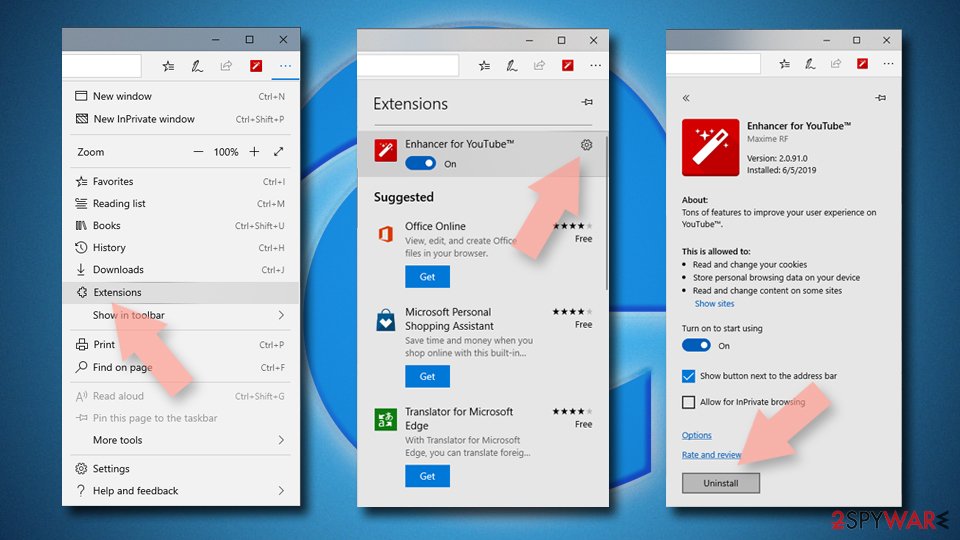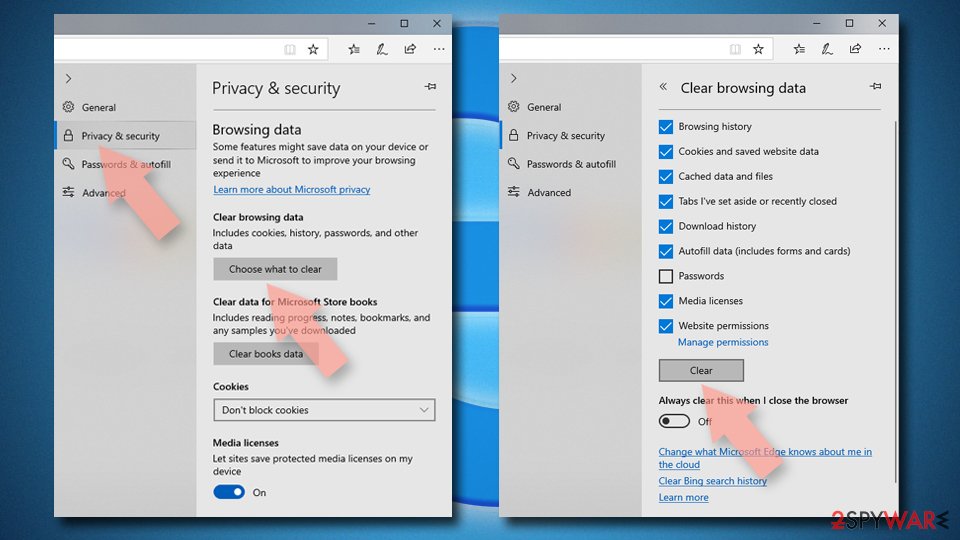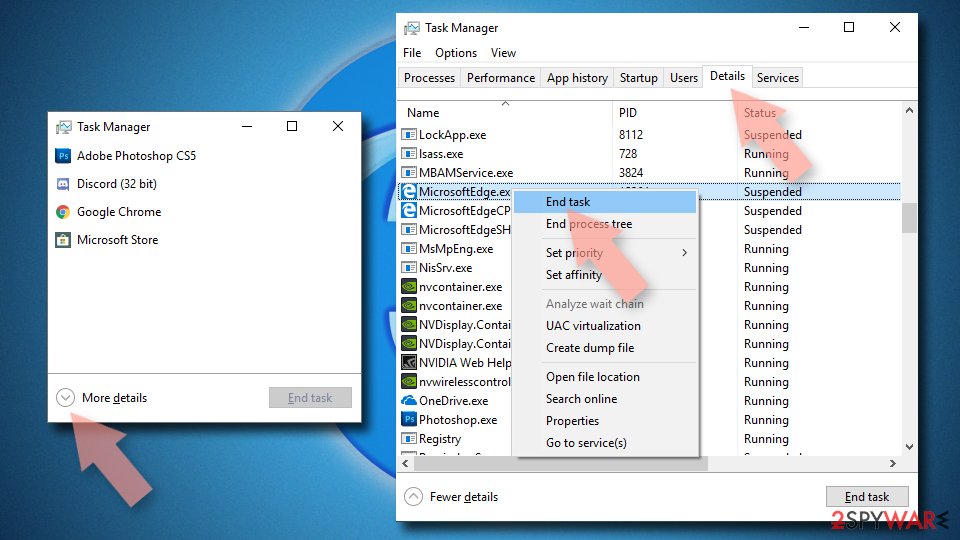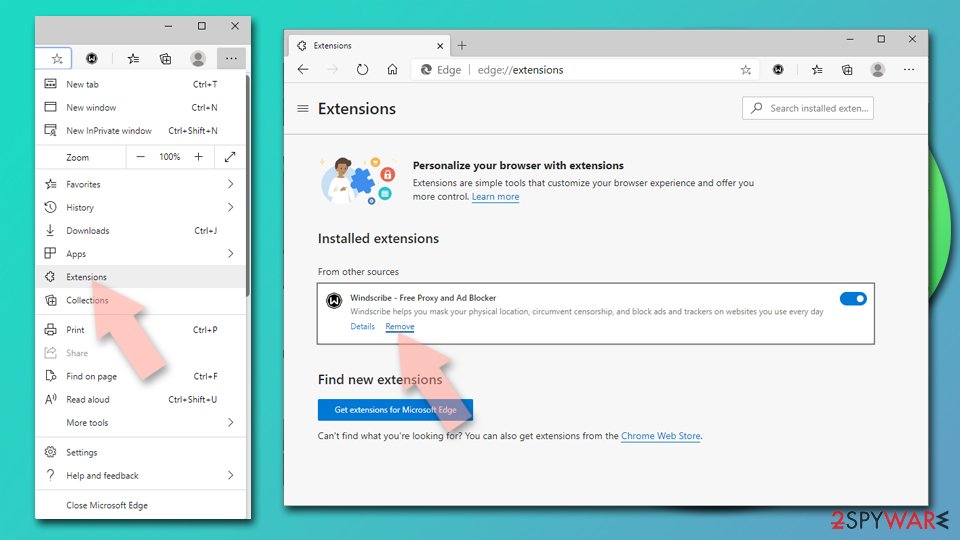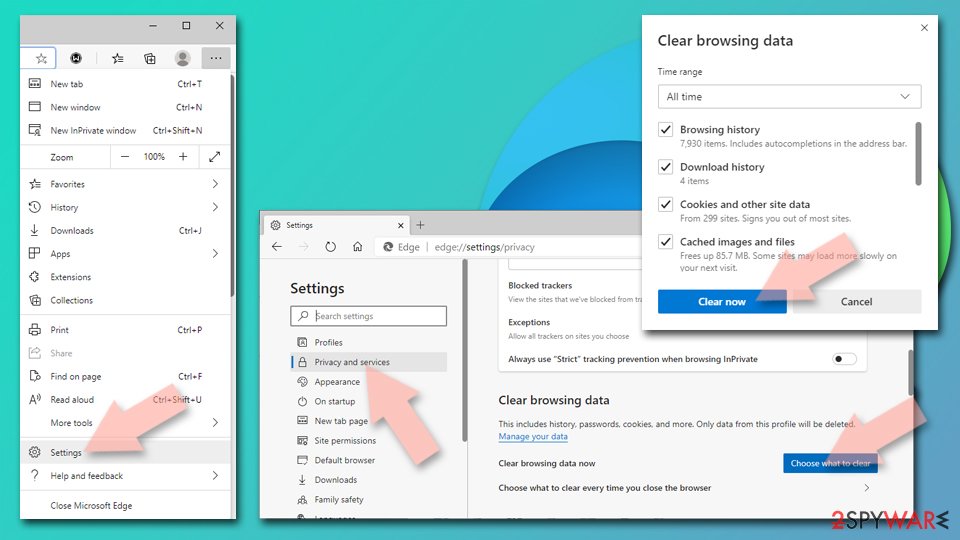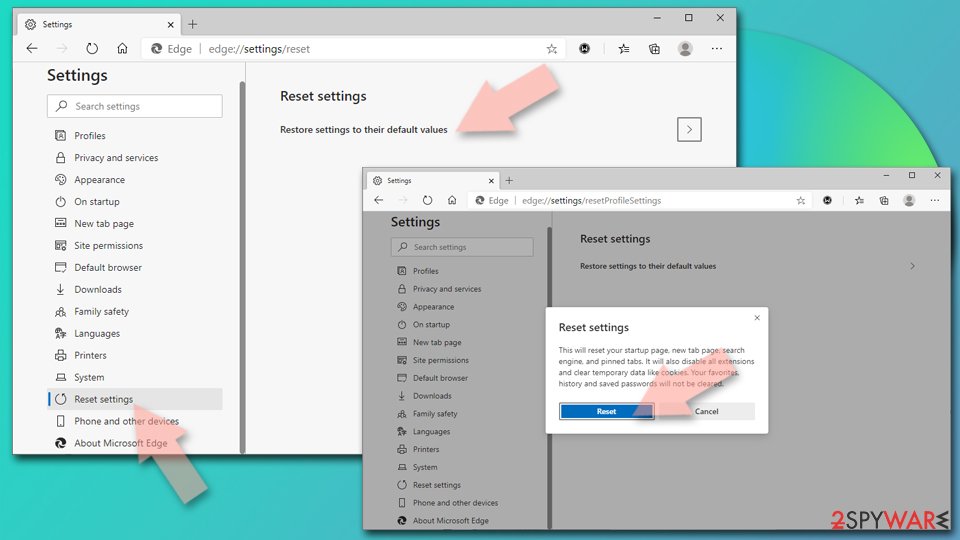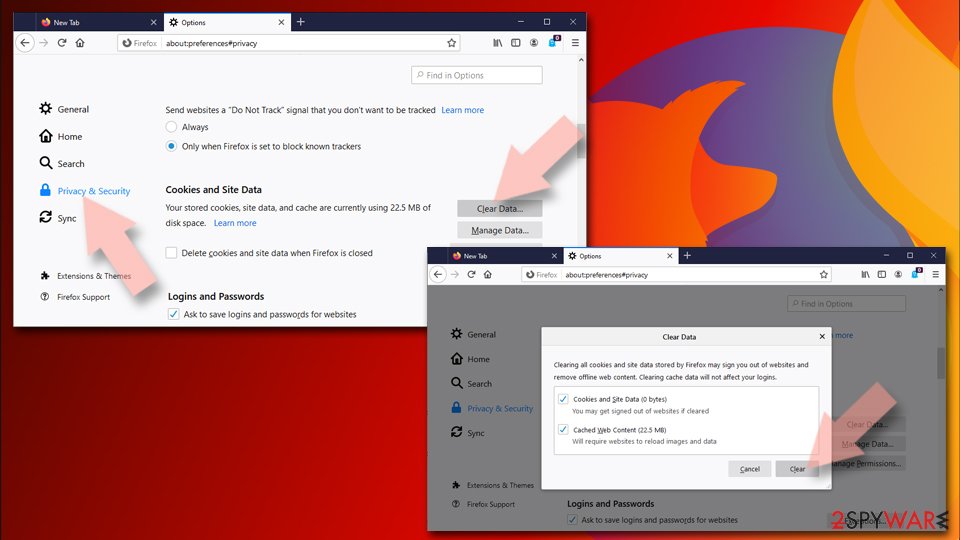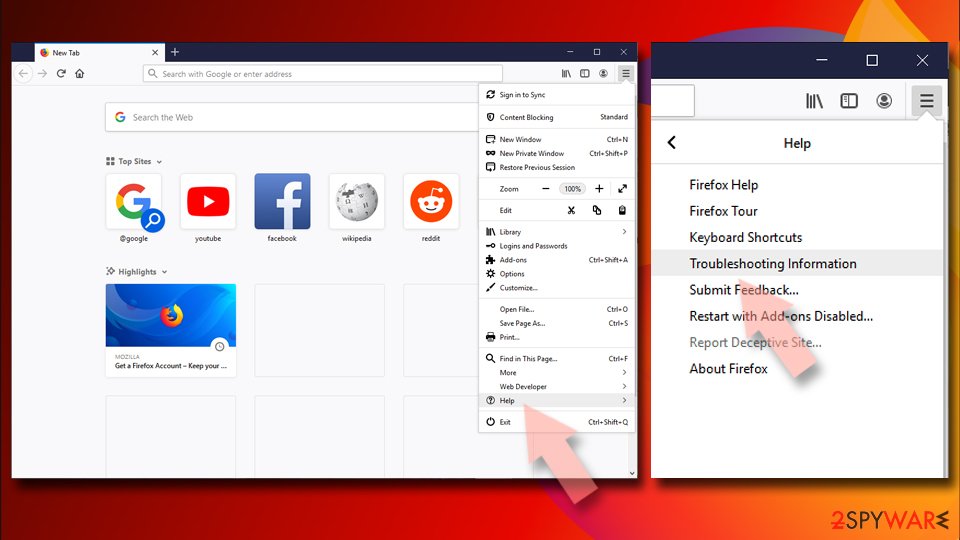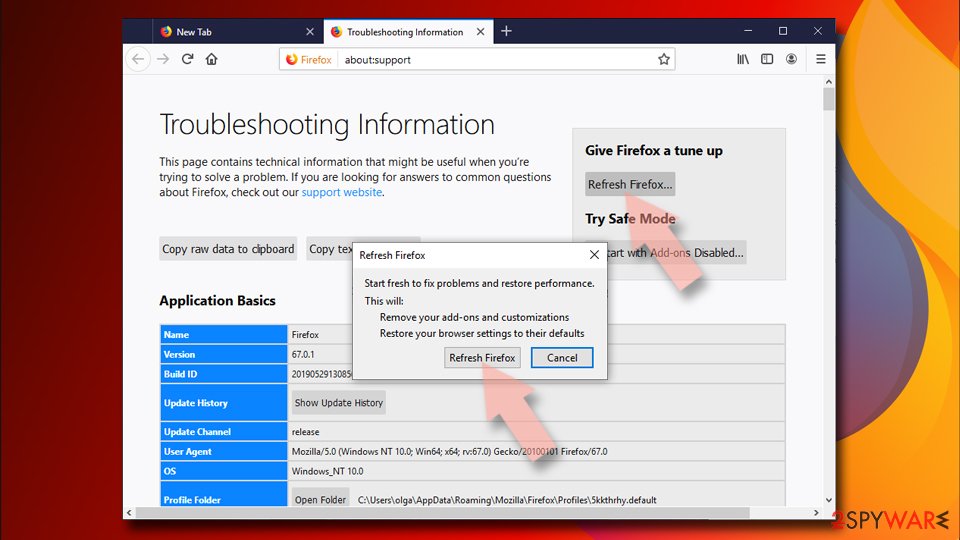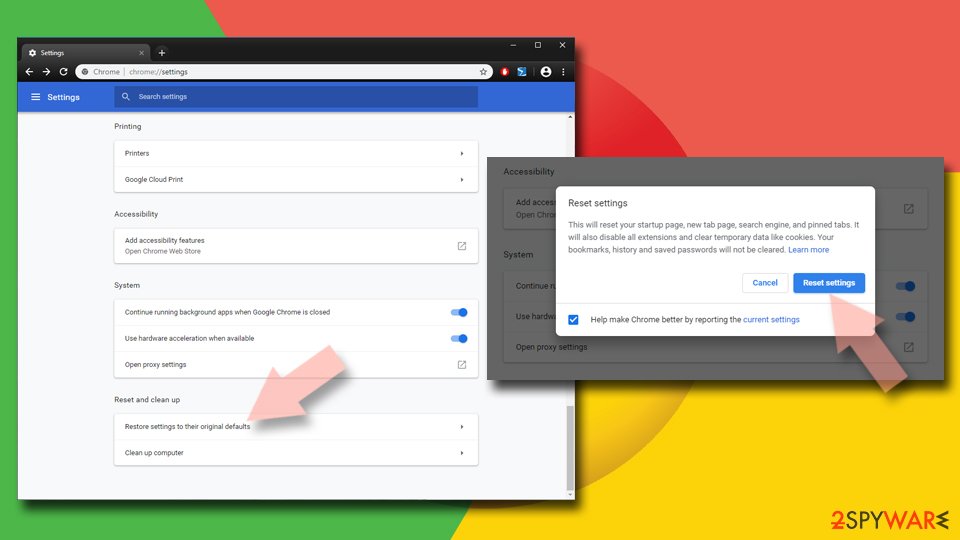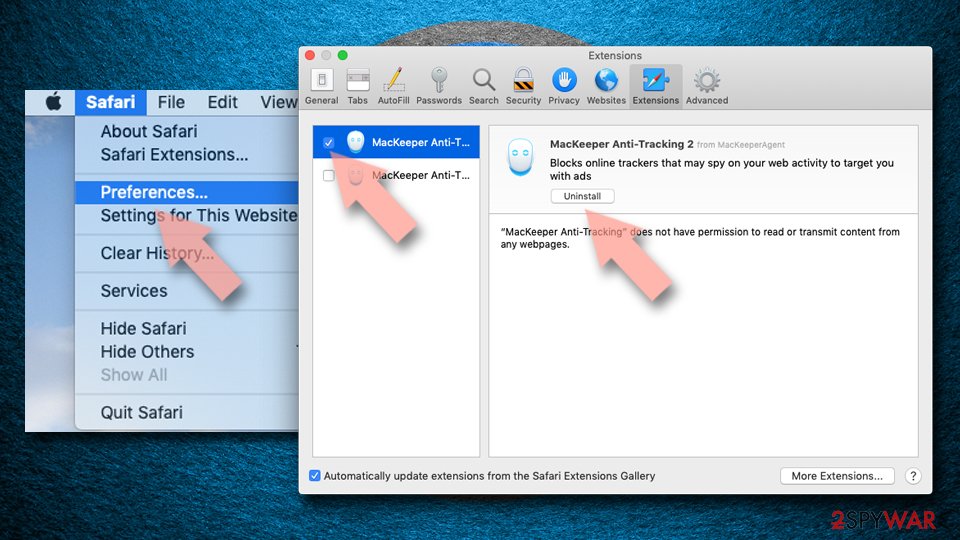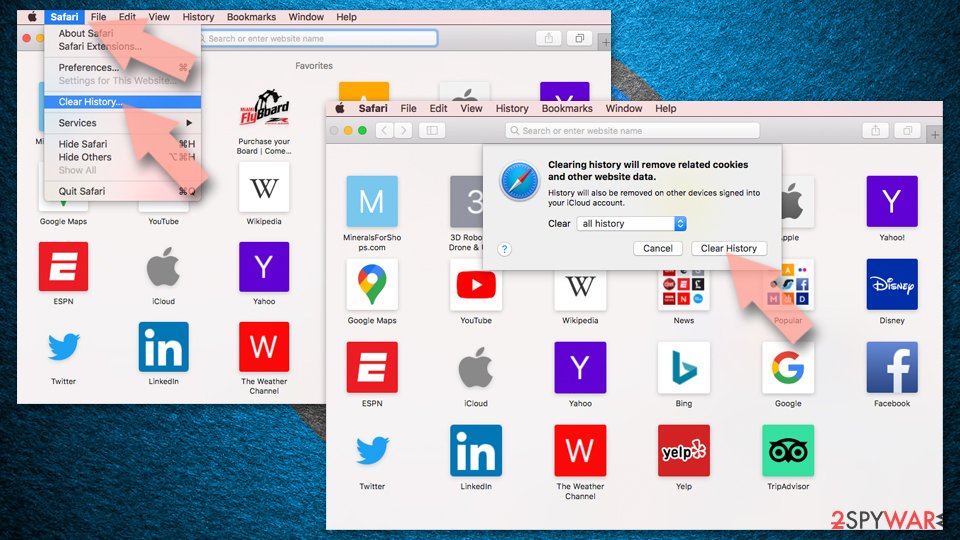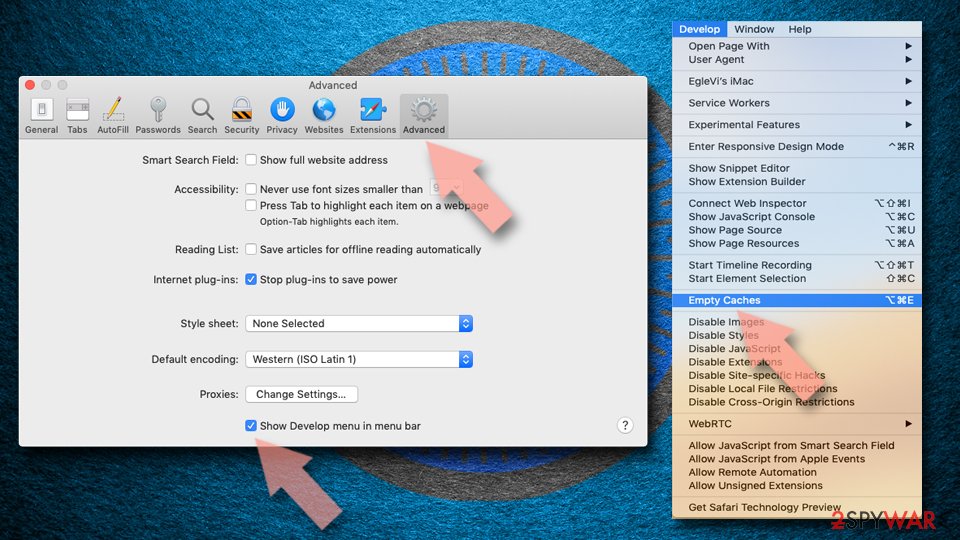Searchingfast.com virus (Removal Instructions) - Updated
Searchingfast.com virus Removal Guide
What is Searchingfast.com virus?
Searchingfast.com – a PUP that causes suspicious redirects
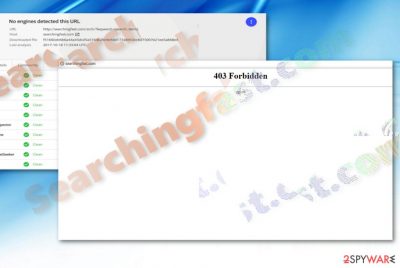
Searchingfast.com virus defines a browser redirect malware. It does not contain its proper web page. Whether you attempt to access it via Chrome, Internet Explorer, Microsoft Edge, or any other web browser, you will run into the “Forbidden” sign.
| name | Searchingfast.com |
|---|---|
| Type | PUP, browser hijacker |
| Symptoms | Altered browser settings; search results contain tons of ads; browsing speed is harshly diminished |
| Risks | Malware infections, privacy loss |
| Distribution | Software bundles, deceptive ads |
| Elimination | Remove any unwelcomed guests by scanning your device with reputable security tools |
| System repair | Use the all-in-one FortectIntego system diagnostics tool to delete all tracking cookies and resolve system-related irregularities |
Despite its misleading behavior, it has a purpose – it functions via http://searchingfast.com/srch/?keyword={search } URL address and directs users to customized Google web page. It functions identically to another PUP site – topsitesearches.com. The main difference between the two is that the latter is directed to the Yandex page.
There is also another feature that distinguishes the two PUPs. The article's culprit's website contains one-word “nginx” on the blank page. The latter is the name of the older Nginx adware, which also disguises under dubious blank page appearance. In fact, though such web pages look faulty, they inject adware elements into the browser. They trigger:
- Redirections to affiliated websites
- New tab pop-ups
Though VirusTotal does not label this PUP as malicious, if you got redirected there more than once, it is time to clean the browser. You can remove Searchingfast web elements with the assistance of SpyHunter 5Combo Cleaner, Malwarebytes, or another trustworthy anti-malware software.
You could also try to remove the browser hijacker manually. Use our guides at the bottom of the article for that. Once the threat is eliminated, perform system diagnostics with the FortectIntego PC repair software to resolve all system-related inconsistencies and delete tracking cookies.
Troubling features of a browser hijacker
Firstly, one of the key negative aspects of redirections or new tab pop-ups is that they can mislead the virtual community to infected websites. If you do not have a habit of updating your browser or security tools, getting redirected to a website that has embedded an exploit kit code might lead to significantly severe problems, especially considering the fact that exploit kits might lurk in legitimate sites as well[1].
Secondly, ordinary users may not suspect that crypto-currency miners[2] may be planted in the redirect pages since they are not visible. They also function via scripts. Such tools mine crypto-coins for their authors while using unsuspecting users’ PC and browser energy resources.
Since such activity has become a trend among cyber felons, you never know whether the redirected pages are safe. Therefore, once you spot Searchingfast redirect phenomenon, proceed to the elimination of its web scripts. 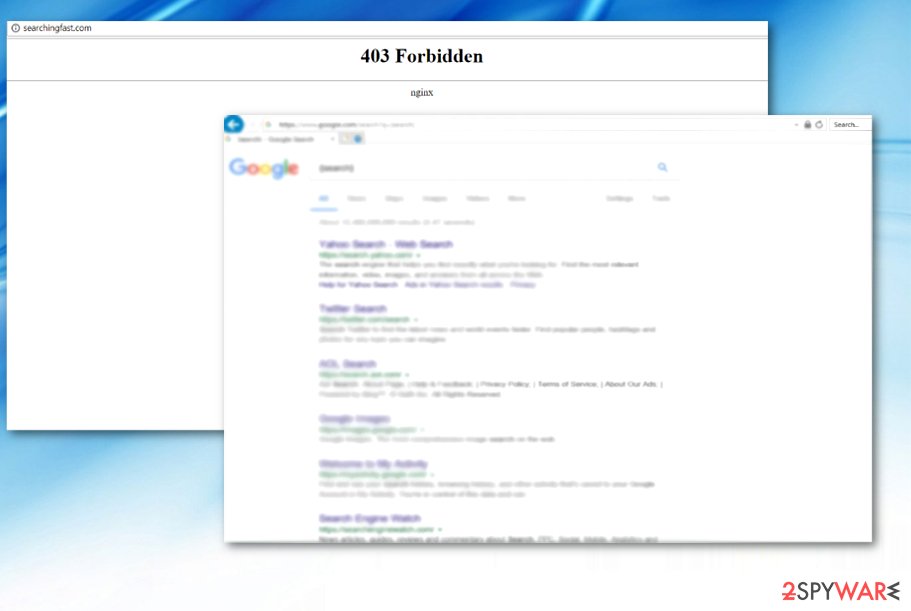
Distribution tendencies
You are likely to encounter this page if you clicked on a specific link on a sponsored website. Regarding its name, you might have also got directed there if you were looking for an alternative browsing tool that would help you “search fast.” Considering its relation to Nginx, it might also be spread in its network.
Searchingfast hijack does not exist since it is unlikely to be spread as an optional add-on to free programs. In any case, pay attention to the installation wizard. “Recommended” or “Express” mode might hide unwanted optional programs.
Stop redirects by removing Searchingfast.com virus
If you get misguided to the web page occasionally, it is time to remove the adware scripts planted in the browser. Install malware elimination tool to speed up the removal process. If you're looking for recommendations, see what we suggest below this paragraph.
You may also check manual instructions. They thoroughly explain how to remove Searchingfast.com virus elements by resetting the browser. This PUP fishes not only for users in English but in Greek[3] or Czech sites. After cleaning up your device, run system diagnostics with compatible software to ensure your device runs smoothly.
You may remove virus damage with a help of FortectIntego. SpyHunter 5Combo Cleaner and Malwarebytes are recommended to detect potentially unwanted programs and viruses with all their files and registry entries that are related to them.
Getting rid of Searchingfast.com virus. Follow these steps
Uninstall from Windows
Instructions for Windows 10/8 machines:
- Enter Control Panel into Windows search box and hit Enter or click on the search result.
- Under Programs, select Uninstall a program.

- From the list, find the entry of the suspicious program.
- Right-click on the application and select Uninstall.
- If User Account Control shows up, click Yes.
- Wait till uninstallation process is complete and click OK.

If you are Windows 7/XP user, proceed with the following instructions:
- Click on Windows Start > Control Panel located on the right pane (if you are Windows XP user, click on Add/Remove Programs).
- In Control Panel, select Programs > Uninstall a program.

- Pick the unwanted application by clicking on it once.
- At the top, click Uninstall/Change.
- In the confirmation prompt, pick Yes.
- Click OK once the removal process is finished.
Delete from macOS
Remove items from Applications folder:
- From the menu bar, select Go > Applications.
- In the Applications folder, look for all related entries.
- Click on the app and drag it to Trash (or right-click and pick Move to Trash)

To fully remove an unwanted app, you need to access Application Support, LaunchAgents, and LaunchDaemons folders and delete relevant files:
- Select Go > Go to Folder.
- Enter /Library/Application Support and click Go or press Enter.
- In the Application Support folder, look for any dubious entries and then delete them.
- Now enter /Library/LaunchAgents and /Library/LaunchDaemons folders the same way and terminate all the related .plist files.

Remove from Microsoft Edge
Delete unwanted extensions from MS Edge:
- Select Menu (three horizontal dots at the top-right of the browser window) and pick Extensions.
- From the list, pick the extension and click on the Gear icon.
- Click on Uninstall at the bottom.

Clear cookies and other browser data:
- Click on the Menu (three horizontal dots at the top-right of the browser window) and select Privacy & security.
- Under Clear browsing data, pick Choose what to clear.
- Select everything (apart from passwords, although you might want to include Media licenses as well, if applicable) and click on Clear.

Restore new tab and homepage settings:
- Click the menu icon and choose Settings.
- Then find On startup section.
- Click Disable if you found any suspicious domain.
Reset MS Edge if the above steps did not work:
- Press on Ctrl + Shift + Esc to open Task Manager.
- Click on More details arrow at the bottom of the window.
- Select Details tab.
- Now scroll down and locate every entry with Microsoft Edge name in it. Right-click on each of them and select End Task to stop MS Edge from running.

If this solution failed to help you, you need to use an advanced Edge reset method. Note that you need to backup your data before proceeding.
- Find the following folder on your computer: C:\\Users\\%username%\\AppData\\Local\\Packages\\Microsoft.MicrosoftEdge_8wekyb3d8bbwe.
- Press Ctrl + A on your keyboard to select all folders.
- Right-click on them and pick Delete

- Now right-click on the Start button and pick Windows PowerShell (Admin).
- When the new window opens, copy and paste the following command, and then press Enter:
Get-AppXPackage -AllUsers -Name Microsoft.MicrosoftEdge | Foreach {Add-AppxPackage -DisableDevelopmentMode -Register “$($_.InstallLocation)\\AppXManifest.xml” -Verbose

Instructions for Chromium-based Edge
Delete extensions from MS Edge (Chromium):
- Open Edge and click select Settings > Extensions.
- Delete unwanted extensions by clicking Remove.

Clear cache and site data:
- Click on Menu and go to Settings.
- Select Privacy, search and services.
- Under Clear browsing data, pick Choose what to clear.
- Under Time range, pick All time.
- Select Clear now.

Reset Chromium-based MS Edge:
- Click on Menu and select Settings.
- On the left side, pick Reset settings.
- Select Restore settings to their default values.
- Confirm with Reset.

Remove from Mozilla Firefox (FF)
Remove dangerous extensions:
- Open Mozilla Firefox browser and click on the Menu (three horizontal lines at the top-right of the window).
- Select Add-ons.
- In here, select unwanted plugin and click Remove.

Reset the homepage:
- Click three horizontal lines at the top right corner to open the menu.
- Choose Options.
- Under Home options, enter your preferred site that will open every time you newly open the Mozilla Firefox.
Clear cookies and site data:
- Click Menu and pick Settings.
- Go to Privacy & Security section.
- Scroll down to locate Cookies and Site Data.
- Click on Clear Data…
- Select Cookies and Site Data, as well as Cached Web Content and press Clear.

Reset Mozilla Firefox
If clearing the browser as explained above did not help, reset Mozilla Firefox:
- Open Mozilla Firefox browser and click the Menu.
- Go to Help and then choose Troubleshooting Information.

- Under Give Firefox a tune up section, click on Refresh Firefox…
- Once the pop-up shows up, confirm the action by pressing on Refresh Firefox.

Remove from Google Chrome
Delete malicious extensions from Google Chrome:
- Open Google Chrome, click on the Menu (three vertical dots at the top-right corner) and select More tools > Extensions.
- In the newly opened window, you will see all the installed extensions. Uninstall all the suspicious plugins that might be related to the unwanted program by clicking Remove.

Clear cache and web data from Chrome:
- Click on Menu and pick Settings.
- Under Privacy and security, select Clear browsing data.
- Select Browsing history, Cookies and other site data, as well as Cached images and files.
- Click Clear data.

Change your homepage:
- Click menu and choose Settings.
- Look for a suspicious site in the On startup section.
- Click on Open a specific or set of pages and click on three dots to find the Remove option.
Reset Google Chrome:
If the previous methods did not help you, reset Google Chrome to eliminate all the unwanted components:
- Click on Menu and select Settings.
- In the Settings, scroll down and click Advanced.
- Scroll down and locate Reset and clean up section.
- Now click Restore settings to their original defaults.
- Confirm with Reset settings.

Delete from Safari
Remove unwanted extensions from Safari:
- Click Safari > Preferences…
- In the new window, pick Extensions.
- Select the unwanted extension and select Uninstall.

Clear cookies and other website data from Safari:
- Click Safari > Clear History…
- From the drop-down menu under Clear, pick all history.
- Confirm with Clear History.

Reset Safari if the above-mentioned steps did not help you:
- Click Safari > Preferences…
- Go to Advanced tab.
- Tick the Show Develop menu in menu bar.
- From the menu bar, click Develop, and then select Empty Caches.

After uninstalling this potentially unwanted program (PUP) and fixing each of your web browsers, we recommend you to scan your PC system with a reputable anti-spyware. This will help you to get rid of Searchingfast.com registry traces and will also identify related parasites or possible malware infections on your computer. For that you can use our top-rated malware remover: FortectIntego, SpyHunter 5Combo Cleaner or Malwarebytes.
How to prevent from getting browser hijacker
Do not let government spy on you
The government has many issues in regards to tracking users' data and spying on citizens, so you should take this into consideration and learn more about shady information gathering practices. Avoid any unwanted government tracking or spying by going totally anonymous on the internet.
You can choose a different location when you go online and access any material you want without particular content restrictions. You can easily enjoy internet connection without any risks of being hacked by using Private Internet Access VPN.
Control the information that can be accessed by government any other unwanted party and surf online without being spied on. Even if you are not involved in illegal activities or trust your selection of services, platforms, be suspicious for your own security and take precautionary measures by using the VPN service.
Backup files for the later use, in case of the malware attack
Computer users can suffer from data losses due to cyber infections or their own faulty doings. Ransomware can encrypt and hold files hostage, while unforeseen power cuts might cause a loss of important documents. If you have proper up-to-date backups, you can easily recover after such an incident and get back to work. It is also equally important to update backups on a regular basis so that the newest information remains intact – you can set this process to be performed automatically.
When you have the previous version of every important document or project you can avoid frustration and breakdowns. It comes in handy when malware strikes out of nowhere. Use Data Recovery Pro for the data restoration process.
- ^ Dan Goodin. Big-name sites hit by rash of malicious ads spreading crypto ransomware [Updated]. Ars Technica. IT News and Commentary.
- ^ David Jones. Behind-the-Scenes Cryptocurrency Mining Discovered on Showtime Sites. eCommerceTimes. e-Business means Business.
- ^ Eliminate computer threats. Ioys. Cybersecurity news in Greek.





